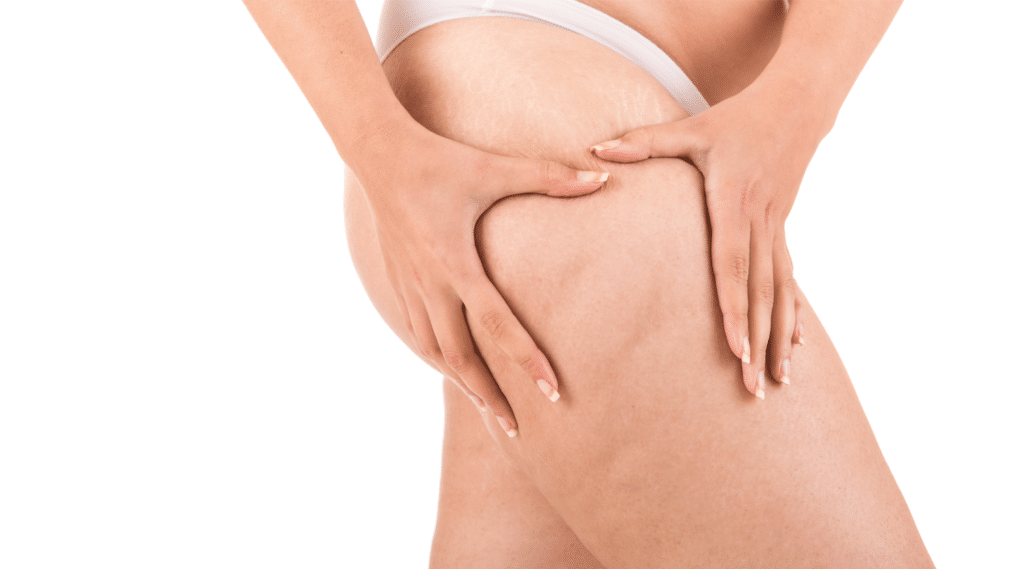Abdominoplasty, often coined as the ultimate route to a flatter abdomen through cosmetic surgery, strips away not just excess skin but also tightens your core by mending abdominal muscles. This procedure, which can be a full tummy tuck or an extended tummy tuck, often incorporates liposuction to enhance the contouring effect. It’s a surgical dance of precision, blending full tummy tuck, extended tummy tuck, and liposuction techniques in cosmetic surgery that redefines your midsection silhouette. But don’t be misled; while abdominoplasty can dramatically reshape the abdominal wall, it’s crucial to anchor expectations in reality—six-pack dreams might remain just that without sweat equity post-surgery. As tummy tucks and liposuction surge in popularity, their evolution reflects improved techniques and subtler scars—think bellybutton artistry with an umbilical stalk as the canvas, rectus muscle contouring akin to sculpture, and the skill of a cosmetic surgeon making a discreet incision.
Understanding Abdominoplasty and Its Types
Full vs. Mini
Abdominoplasty, or a tummy tuck, reshapes the abdomen. There are two main types: full and mini. A full abdominoplasty is more extensive. The procedure, known as a full tummy tuck, involves cutting from hip to hip above the pubic area, where a cosmetic surgeon then tightens muscles and repositions the bellybutton after removing excess skin and fat. A flap of skin is carefully re-draped over the newly contoured area. The surgeon then tightens muscles and removes excess skin.

A mini abdominoplasty is less invasive. The procedure specifically addresses the lower belly area beneath the bellybutton, often sought after by those considering a tummy tuck to correct abdominal wall laxity and tighten the rectus muscle. This option suits those with less excess skin.
Cosmetic vs. Medical
Tummy tucks can be cosmetic or medically necessary. Cosmetic procedures like a tummy tuck aim to improve appearance and remove excess fat after weight loss or pregnancy, often for patients seeking aesthetic enhancement. Tummy tuck procedures by a cosmetic surgeon can be medically necessary for patients with issues like hernias or back pain caused by weakened abdominal muscles and excess fat.
Tummy tuck surgeries, performed by a cosmetic surgeon, differ in purpose but both offer patients improved body contours by removing excess fat.
Circumferential Approach
Circumferential abdominoplasty goes further than traditional methods. A tummy tuck procedure performed by a cosmetic surgeon encircles the waistline, targeting excess fat in front and back areas for patients seeking a more defined shape. This tummy tuck technique, performed by a cosmetic surgeon, suits patients who have lost significant weight and have excess skin and fat around their entire torso.
Ideal Candidates for a Tummy Tuck
Health Requirements
Good health is crucial for patients considering a tummy tuck by a cosmetic surgeon to remove excess fat. Candidates must have stable weight and be physically fit. This means no significant fluctuations in weight for patients, as these can affect the tummy tuck surgery’s results performed by a cosmetic surgeon. Maintaining a stable weight is crucial for patients to ensure that the results of their tummy tuck are long-lasting, especially in reducing excess fat.
Patients with good muscle tone and firm skin will likely see better results from a tummy tuck procedure. Patients who have experienced significant weight loss may also consider a tummy tuck, or abdominoplasty, to remove excess skin that diet and exercise cannot fix.
Lifestyle Factors
Non-smoking patients make ideal candidates for a tummy tuck due to the risks smoking poses to healing. Smoking can slow down recovery and increase complications for patients post-tummy tuck surgery. It’s essential for patients to quit smoking several weeks before and after their tummy tuck procedure.
Candidates, particularly patients considering a tummy tuck, should also not plan future pregnancies following surgery, as pregnancy can alter the effects of the procedure by stretching out the skin again.
Future Planning
When considering a tummy tuck, patients should think about long-term plans like potential pregnancies or further weight changes which could affect the procedure’s benefits.
- Pregnancy after a tummy tuck might lead to additional loose skin or stretch marks.
- Gaining significant amounts of weight post-procedure could similarly impact results negatively.
Therefore, those looking into full abdominoplasty should ideally be done with their family planning phase and committed to maintaining their current body weight through healthy lifestyle choices.
Preparing for Your Abdominoplasty Procedure
Diet Adjustments
Before your abdominoplasty, changing your diet is crucial. It helps minimize surgery risks. Avoid foods that may cause inflammation or increase bleeding risk. These include:
- Alcohol
- Supplements like vitamin E and omega-3 fatty acids
- Certain herbs such as garlic and ginseng
Eat plenty of fruits, vegetables, and lean proteins instead. They aid in recovery.
Doctors also advise on medication adjustments before the procedure. Stop blood-thinning medications a few weeks prior to surgery with your doctor’s guidance. This includes aspirin and certain anti-inflammatory drugs.
Support Planning
After an abdominoplasty, you won’t be able to drive or perform strenuous activities for a while. Arrange for someone to take you home post-surgery. It’s important to have support during recovery too. This might mean asking family or friends to help out at home.
Medical Evaluations
Pre-operative evaluations are necessary before undergoing abdominoplasty. Your surgeon will order lab tests to ensure you’re fit for surgery and anesthesia. These can include:
- Blood work
- Heart function tests
- Other assessments based on individual health
Follow all instructions given by your healthcare provider closely leading up to the operation day.
Remember, preparing properly can lead to better results and a smoother recovery after an abdominoplasty.
The Surgical Steps of an Abdominoplasty
Anesthesia Administration
Before the surgeon makes any incisions, general anesthesia is administered. This ensures that you are asleep and pain-free during the procedure. It’s a critical step for your comfort and safety.
Once under anesthesia, the surgical team prepares your abdomen. They clean the area to reduce infection risk. Then they make careful measurements.
Tissue Removal
The next step involves making an incision. Usually, it runs from hip to hip just above the pubic area. Through this incision site, excess skin and fat are removed.
Surgeons also tighten weakened or separated muscles during this stage. This creates a firmer abdominal wall and narrows the waistline.
Muscle Tightening
Muscle tightening is crucial for contouring your midsection. Surgeons use sutures to stitch muscles together more tightly.
This process can significantly improve your core stability too. It often helps with back pain caused by weak abdominal muscles.
Closure Techniques
After shaping the abdomen, surgeons close up with sutures or skin adhesives. They place these carefully to minimize scarring as much as possible. A new belly button may be created if necessary due to skin removal. This helps maintain a natural look post-surgery.
Creating a new belly button is an art in itself within abdominoplasty surgeries. It must look natural and well-positioned on your newly shaped abdomen.
Risks and Complications Associated with Tummy Tucks
Surgical Risks
After learning about the surgical steps of an abdominoplasty, it’s important to understand the potential risks. Bleeding during or after surgery can occur. Infection is another risk that requires prompt attention. Scarring is inevitable with any surgery, including tummy tucks, but its severity varies among individuals.
Patients should prepare for these possibilities. They must follow their surgeon’s guidance closely to minimize complications.
Anesthesia Concerns
An extended tummy tuck involves anesthesia which carries its own risks. Some people may have adverse reactions ranging from mild side effects to more severe complications like respiratory issues or blood clots.
It’s essential for patients to discuss their medical history with anesthesiologists beforehand. This ensures safer administration of anesthesia during the procedure.
Sensory Changes
Post-surgery numbness or changes in skin sensation are common experiences for many patients following a tummy tuck. These sensory alterations might be temporary or permanent depending on individual cases.
Awareness and understanding of these potential changes are crucial before undergoing this cosmetic procedure.
To conclude, while abdominoplasty can offer significant benefits in terms of body contouring and self-image enhancement, it comes with inherent risk factors such as bleeding, infection, scarring, complications related to anesthesia, and altered skin sensations post-procedure. Prospective patients must weigh these against the desired outcomes and consult thoroughly with healthcare professionals before proceeding.
Post-Abdominoplasty Care and Recovery
Surgeon’s Instructions
Following your surgeon’s advice is crucial after abdominoplasty. They will provide specific guidelines for wound care to ensure proper healing. It often includes keeping the area clean, applying ointments, and changing dressings regularly. Do not overlook these instructions as they prevent infection and aid in a smoother recovery.
Patients should also monitor their incisions for signs of healing. Report any unusual changes or symptoms to your doctor immediately. Following these steps diligently can lead to more effective results.
Activity Resumption
Knowing when to resume activities post-surgery is vital for recovery. Your surgeon will outline a timeline that typically starts with light walking soon after surgery to promote circulation. Gradually, you may return to more strenuous activities, including exercise routines.
Listen carefully to your body during this time and avoid overexertion which could cause setbacks in the healing process. Returning too quickly to normal activity levels can jeopardize your results and health.
Complication Signs
Stay vigilant for any signs of complications such as excessive swelling, severe pain, or fever which could indicate an infection or other issues requiring immediate medical attention:
- Unusual discharge from incision sites.
- Persistent redness around wounds.
- Sudden bleeding not associated with regular wound care.
If you experience any of these problems, contact your healthcare provider without delay. Early intervention is key in managing potential complications effectively.
Long-Term Outcomes and Maintaining Results
Lifestyle Choices
After an abdominoplasty, maintaining results is crucial. Your daily habits play a big role. Eating well and staying active are key. They help keep your new shape.
Avoiding weight gain is important too. Gaining pounds can stretch the skin again. This might undo the procedure’s benefits.
Weight Fluctuations
Gains or losses in weight affect outcomes greatly. After surgery, keeping a stable weight is best for long-term success.
Significant changes in weight can alter results negatively. It’s wise to follow a balanced diet and exercise regularly to avoid this.
Follow-Up Care
Regular checkups with your healthcare provider are essential after abdominoplasty. They ensure recovery goes smoothly and address any concerns early on.
An interprofessional team often aids in monitoring progress post-surgery, offering comprehensive care that supports optimal healing and maintenance of results over time.
Choosing the Right Cosmetic Surgeon for Abdominoplasty
Board Certification
When looking for a cosmetic surgeon to perform an abdominoplasty, board certification is key. This ensures that the doctor has undergone rigorous training and testing. Look specifically for surgeons certified by recognized plastic surgery boards.
A board-certified plastic surgeon typically has specialized skills in procedures like abdominoplasty. They understand both aesthetic and functional aspects of this surgery. Check their credentials carefully before making a decision.
Portfolio Review
It’s important to review a surgeon’s portfolio of before-and-after photos. These images showcase the results of past surgeries and can indicate a surgeon’s skill level.
Look at these photos with a critical eye, noting consistency in outcomes and any improvements you desire for yourself. A good set of photos should display various body types to demonstrate versatility in the surgeon’s work.
Communication Style
The way your surgeon communicates is crucial to feeling comfortable throughout your journey. You want someone who listens well and explains things clearly.
During consultations, assess if they are patient with questions and concerns you may have about cosmetic surgery or recovery times post-abdominoplasty.
Having trust in your doctor’s approach can make all the difference in your comfort level pre- and post-surgery.
Conclusion
Abdominoplasty, or the tummy tuck, is more than just a cosmetic fix—it’s a journey towards a renewed self-image. You’ve learned what the procedure entails, who it’s for, and what to expect before, during, and after surgery. It’s clear that while the path to your ideal physique might be paved with considerations and precautions, the destination can be truly transformative. Risks are part of the package, but with the right surgeon and care plan, you’re setting yourself up for success.
As you weigh your options, remember that this is your story—your body. If you’re nodding along, feeling ready to take the next step, don’t sit on the fence. Reach out to a board-certified cosmetic surgeon and start turning the page towards your new chapter. It’s time to embrace change and see what a tummy tuck can do for you. Let’s get you feeling like the best version of yourself!
Frequently Asked Questions
What exactly is abdominoplasty?
Abdominoplasty, or a tummy tuck, is a surgical procedure that removes excess skin and fat from the abdomen and tightens the abdominal muscles for a smoother profile.
Who typically qualifies for a tummy tuck?
Ideal candidates are those who have stable weight, excess abdominal skin after pregnancy or weight loss, and are in good overall health. It’s not a substitute for weight loss.
How should I prepare for an abdominoplasty?
You’ll need to get lab tests, adjust current medications, quit smoking if you do, and avoid taking aspirin or anti-inflammatory drugs which can increase bleeding.
Can you walk me through the steps of an abdominoplasty procedure?
Sure! The surgeon makes incisions to remove most of the skin and fat between your belly button and pubic hair in a horizontal oval or elliptical shape. Then they tighten your abdominal muscles.
What risks should I be aware of with a tummy tuck?
Like any surgery, there’s risk involved: infection, bleeding under the skin flap (hematoma), poor healing resulting in conspicuous scarring or skin loss are some examples.
What does recovery from an abdominoplasty involve?
Post-surgery involves rest and limited movement to ensure proper healing. You’ll likely experience soreness and swelling for several weeks. Following your surgeon’s advice is key for smooth recovery.
How do I maintain my new figure post-tummy tuck?
Maintain a healthy lifestyle with balanced dieting and regular exercise to keep results long-term—it’s like keeping up with garden work so weeds don’t overrun your flowers!







